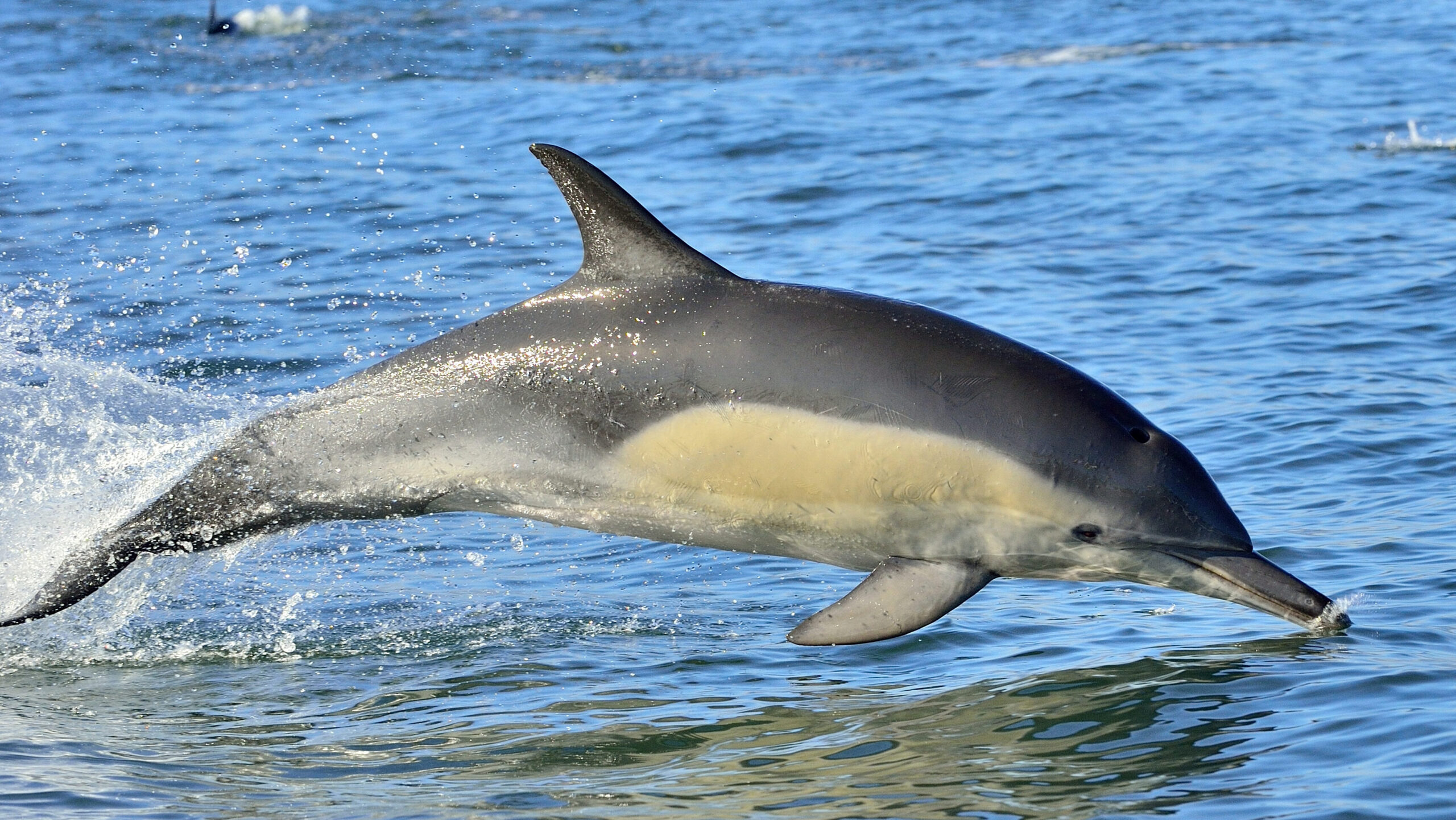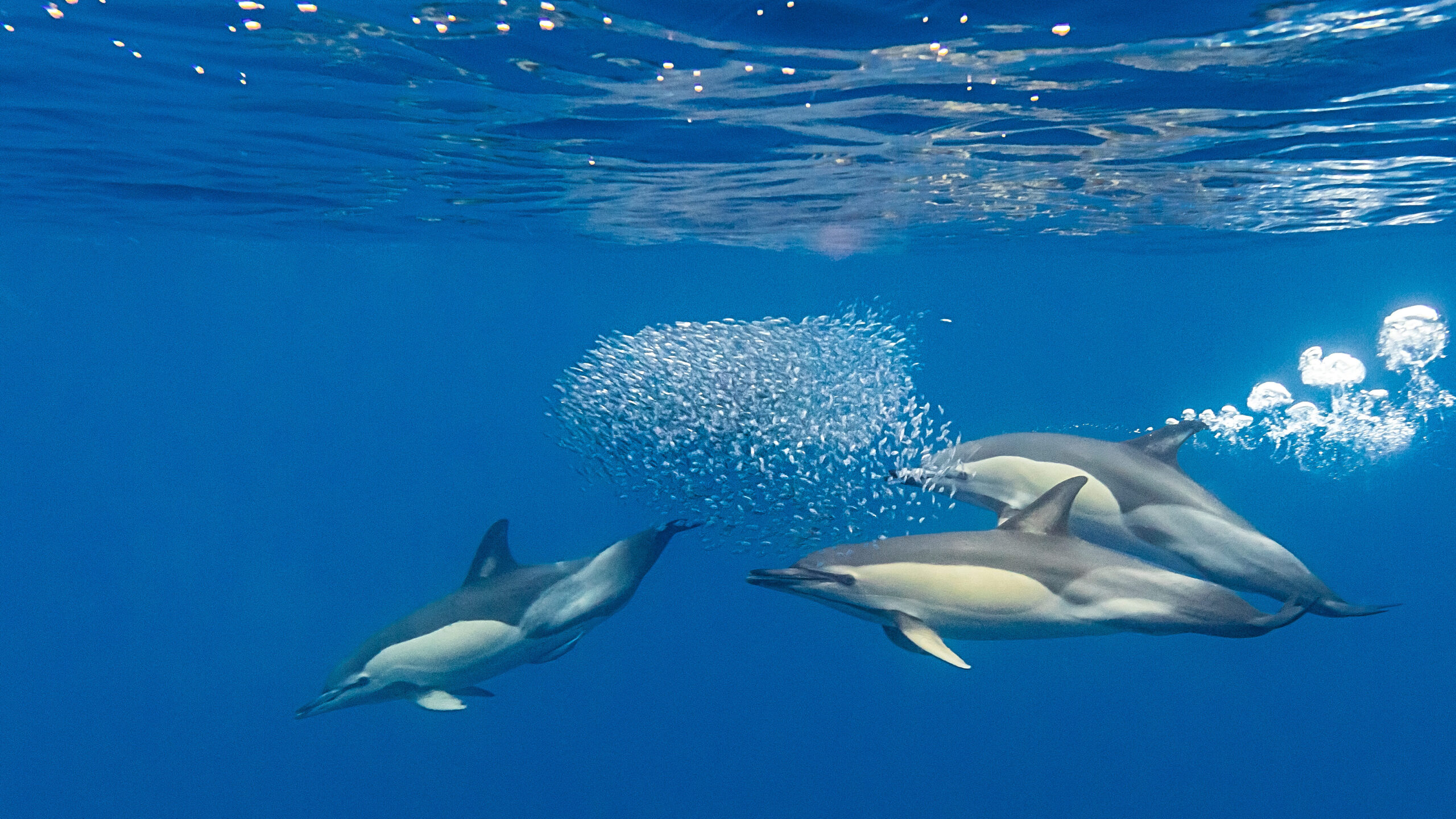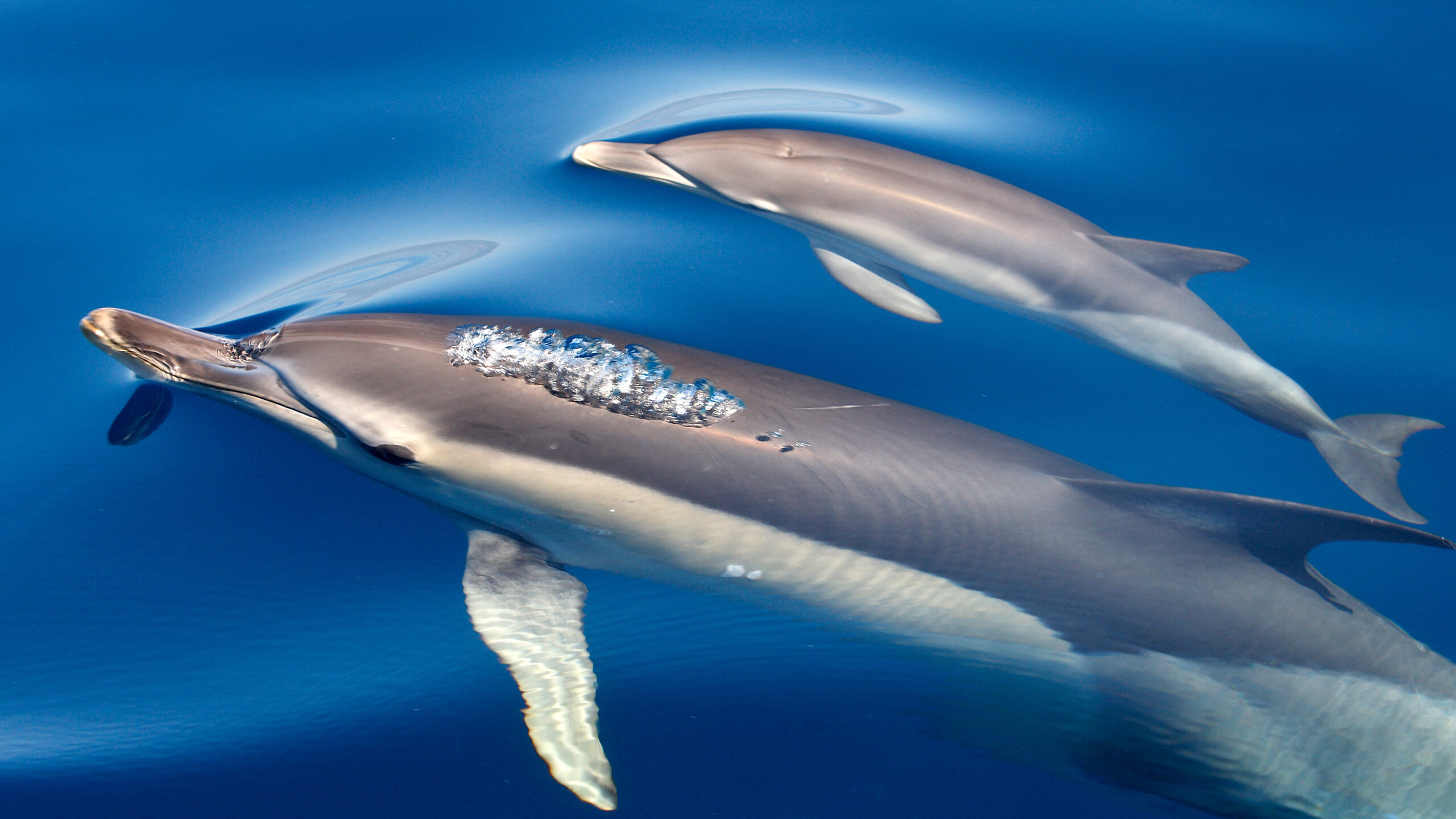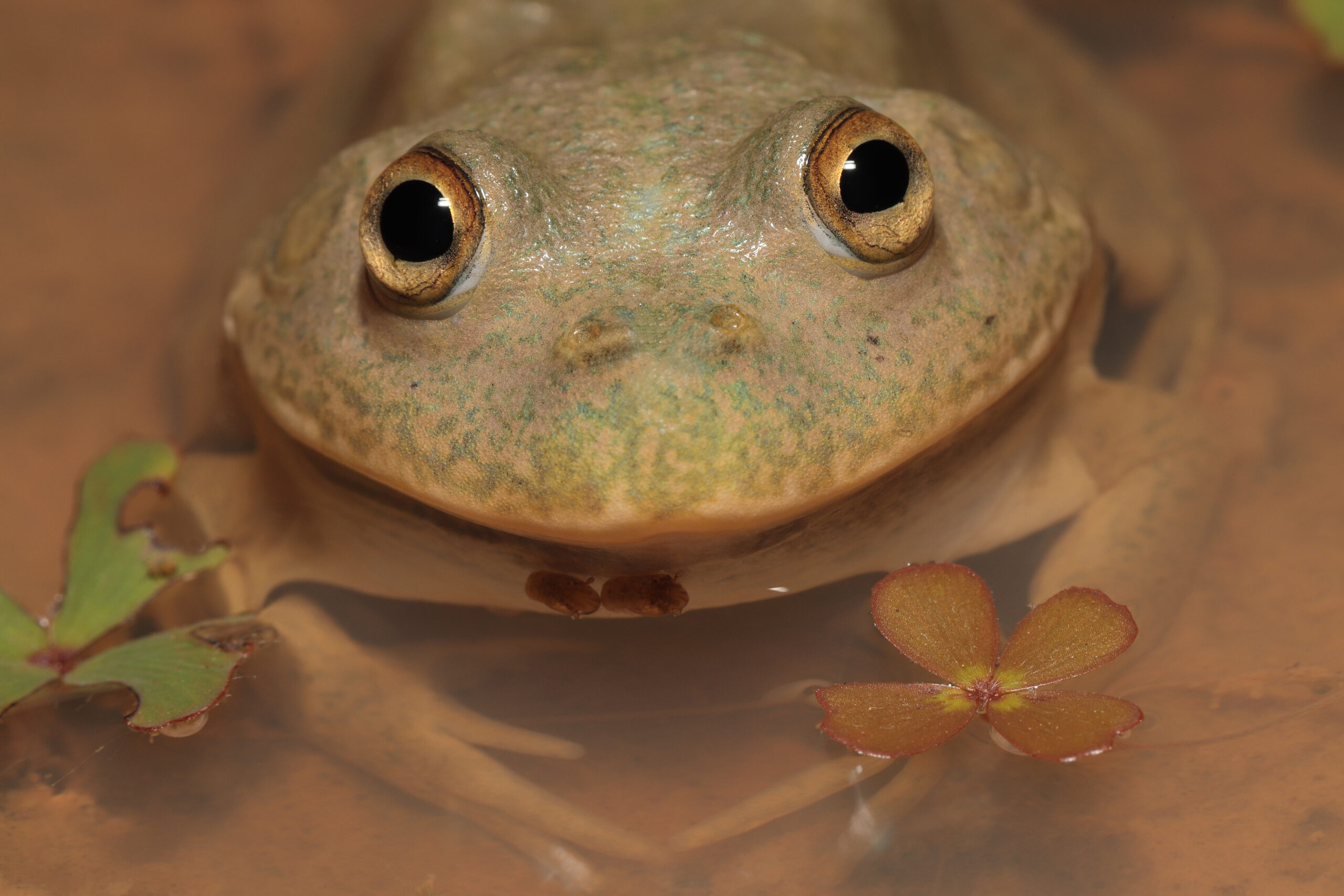| Common name | Common dolphin |
| Scientific name | Delphinus delphis |
| Type | Mammal |
| Diet | Carnivore, eating fish and cephalopods including squid and octopus |
| Average lifespan | 45-50 years |
| Size | 1.7-2.4 metres in length and between 70 and 110kg in weight |
The common dolphin (Delphinus delphis) is one of the most acrobatic animals of the sea and is a favourite amongst ocean lovers.
This carefree mammal is in its element leaping from the ocean and is listed as the most abundant cetacean in the world with over six million common dolphins perusing the global oceans.

Easily set apart from other dolphin species, the common dolphin is slender and streamlined in shape, with a long beak protruding sharply from its head.
This ocean mammal has a unique crisscrossed colour pattern on the top, consisting of dark grey to black over the back of the animal, buff to pale yellow forming an anterior patch, light to medium grey on the sides and a white underbelly.
These mammals have a high dorsal fin which curves backwards, and male common dolphins are slightly larger than females.

Just like other global populations of cetaceans (large sea creatures), taxonomy can be controversial. Three species of common dolphin are recognised within the genus at present – Delphinus delphis, Delphinus capensis and Delphinus tropicalis. Differences in morphology separate the species, for example D.delphis is a short-beaked offshore form, whereas D.capensis is a long-beaked coastal from, and D. tropicalis has a unique number of teeth and skeleton differences that set it apart.
Most often found in medium sized groups or pods of between 20-30 dolphins to up to more than a thousand, the common dolphin is found in offshore waters surrounding all states and territories of Australia, but they aren’t common in northern Australian waters. With a preference for temperate and tropical waters, the common dolphin favours the Atlantic and Oceanic Oceans, which surrounds the continental shelf and pelagic waters.

The diet of the common dolphin consists mainly of squid and small school fish such as sardines, pilchards, and anchovies and this can vary depending on the seasons, as well as the region in which the dolphin inhabits.
As social creatures, they can often be seen feeding together and take advantage of the movement of their prey, by feeding at night. The common dolphin will drive their swarming prey to the surface and during this state of confusion and chaos, enjoy an easy meal, with surface predators like birds taking advantage of this behaviour and also feeding at this time.

Common dolphins have adapted to human activity by taking advantage of the presence of fishing trawlers, but there is a very real risk of incidental capture and death within fishing nets and with other fishing gear for the dolphin.
The gestation time for a common dolphin calf is around a year, with the baby drinking milk from its mother for at least another year after that. It is thought that calving occurs all year round in tropical waters, with births in cooler regions more likely to take place in late spring and early summer.

Highly social and playful mammals, the common dolphin is regarded as a highly acrobatic species of dolphin and will regularly leap, tail slap, and head lunge into the water as they travel. These marine animals also use squeaks, whistles and echolocative clicks, and burst pulse emissions to communicate amongst each another and for navigation and feeding purposes.








